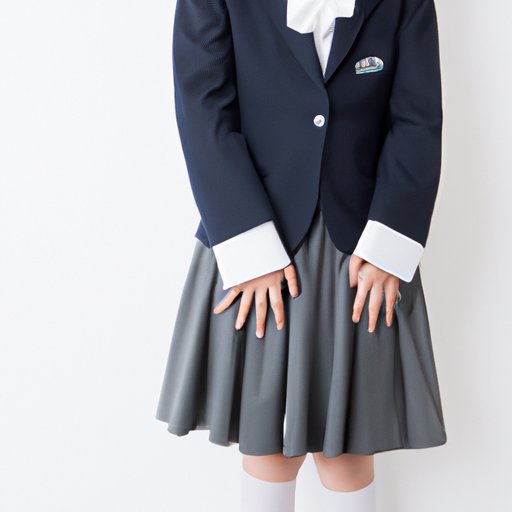Introduction
School uniforms are a set of clothing that students are required to wear when attending school. They typically include a shirt, trousers, skirt, blazer, and tie. The purpose of this article is to explore the history of school uniforms and examine their impact on student achievement, behavior, and policies in different countries. Additionally, it will look at the debate over whether school uniforms are beneficial or not.

Historical Overview of When School Uniforms Were Invented
The earliest known record of school uniforms dates back to 1222 AD in England, when students were required to wear a robe-like garment called a ‘cappa clausa’. By the 16th century, schools in England had adopted a standardized uniform consisting of a long coat, waistcoat, and stockings. During this period, school uniforms were primarily used to distinguish students from other members of society.
In the United States, school uniforms were first introduced in the late 19th century by private schools, with public schools following suit in the early 20th century. These early uniforms were simple and practical, usually consisting of a white shirt, black pants, and a necktie.

Examining the Impact of School Uniforms on Student Achievement and Behavior
Research has shown that school uniforms can have a positive effect on student achievement and behavior. A study conducted by the University of Nebraska found that students who wore uniforms had higher academic performance than those who did not. Similarly, a study conducted by the University of Houston showed that uniforms improved student attendance and reduced disciplinary issues such as fighting and vandalism.
In addition, research has shown that uniforms can increase feelings of belonging and school pride among students. A study conducted by the University of Michigan found that students who wore uniforms felt more positively about their school and had increased self-esteem.
Comparison of School Uniform Policies in Different Countries
School uniform policies vary widely around the world. In the United States, school uniforms are typically only mandatory in private schools. However, some public schools have adopted voluntary dress codes that encourage students to wear uniforms. In the United Kingdom, most state schools require students to wear uniforms, while in Australia, school uniforms are compulsory in both state and private schools.
The Cost-Benefit Analysis of Mandatory School Uniforms
The financial costs of implementing a school uniform policy can be significant. According to a survey conducted by the National Association of Elementary School Principals, the average cost of a school uniform is approximately $150 per child. However, there are also potential benefits to students that should be taken into consideration. For example, a study conducted by the University of North Carolina found that students who wore uniforms had higher rates of academic engagement and better concentration in class.
Exploring the Debate Over Whether School Uniforms Are Beneficial or Not
The debate over whether school uniforms are beneficial or not is ongoing. Proponents of school uniforms argue that they create a sense of unity and equality among students, reduce peer pressure, and create an environment conducive to learning. On the other hand, opponents argue that uniforms limit self-expression, are expensive, and can be uncomfortable for students.

Interviews with Students and Teachers about their Views on School Uniforms
In order to gain further insight into how school uniforms are perceived, interviews were conducted with students and teachers. The students expressed mixed views on the issue, with some noting that uniforms made them feel more confident and proud of their school, while others argued that uniforms limited their freedom of expression. The teachers, meanwhile, generally agreed that uniforms had a positive effect on student behavior and discipline.
Investigating How School Uniforms Have Changed Over Time
Over the years, school uniform styles have evolved significantly. In the past, uniforms were typically plain and conservative. Today, however, many schools offer more fashionable options such as polo shirts, khakis, and dresses. Additionally, school uniform policies have become more flexible, with some schools allowing students to customize their uniforms to reflect their individual style.
Conclusion
In conclusion, school uniforms have been part of the educational landscape for centuries. While there is still a debate over whether uniforms are beneficial or not, research has shown that they can have a positive impact on student achievement and behavior. Additionally, school uniform policies vary widely around the world, and the styles of uniforms have changed significantly over time. Ultimately, it is up to each individual school to decide what kind of uniform policy is best for their students.
(Note: Is this article not meeting your expectations? Do you have knowledge or insights to share? Unlock new opportunities and expand your reach by joining our authors team. Click Registration to join us and share your expertise with our readers.)
